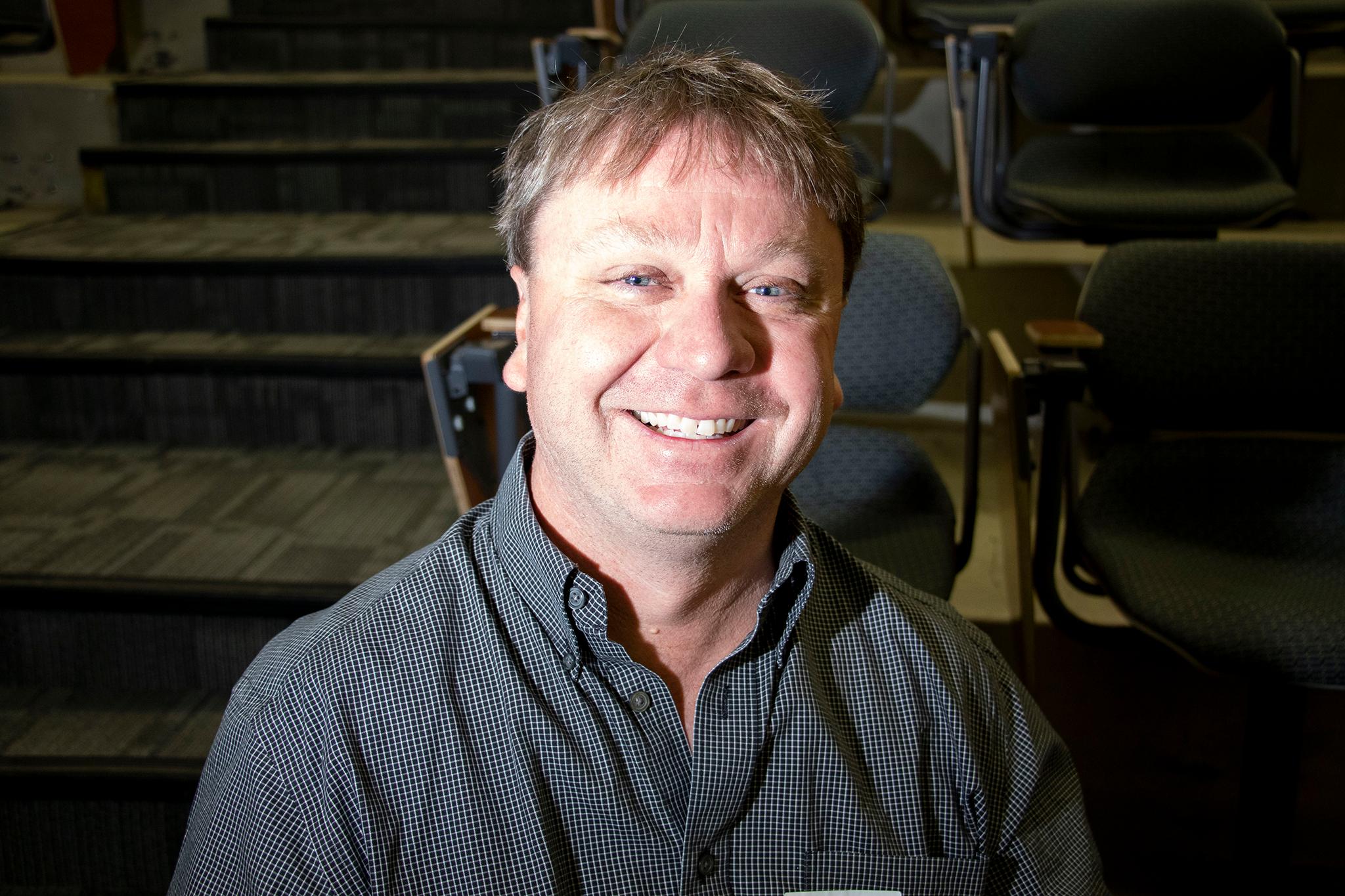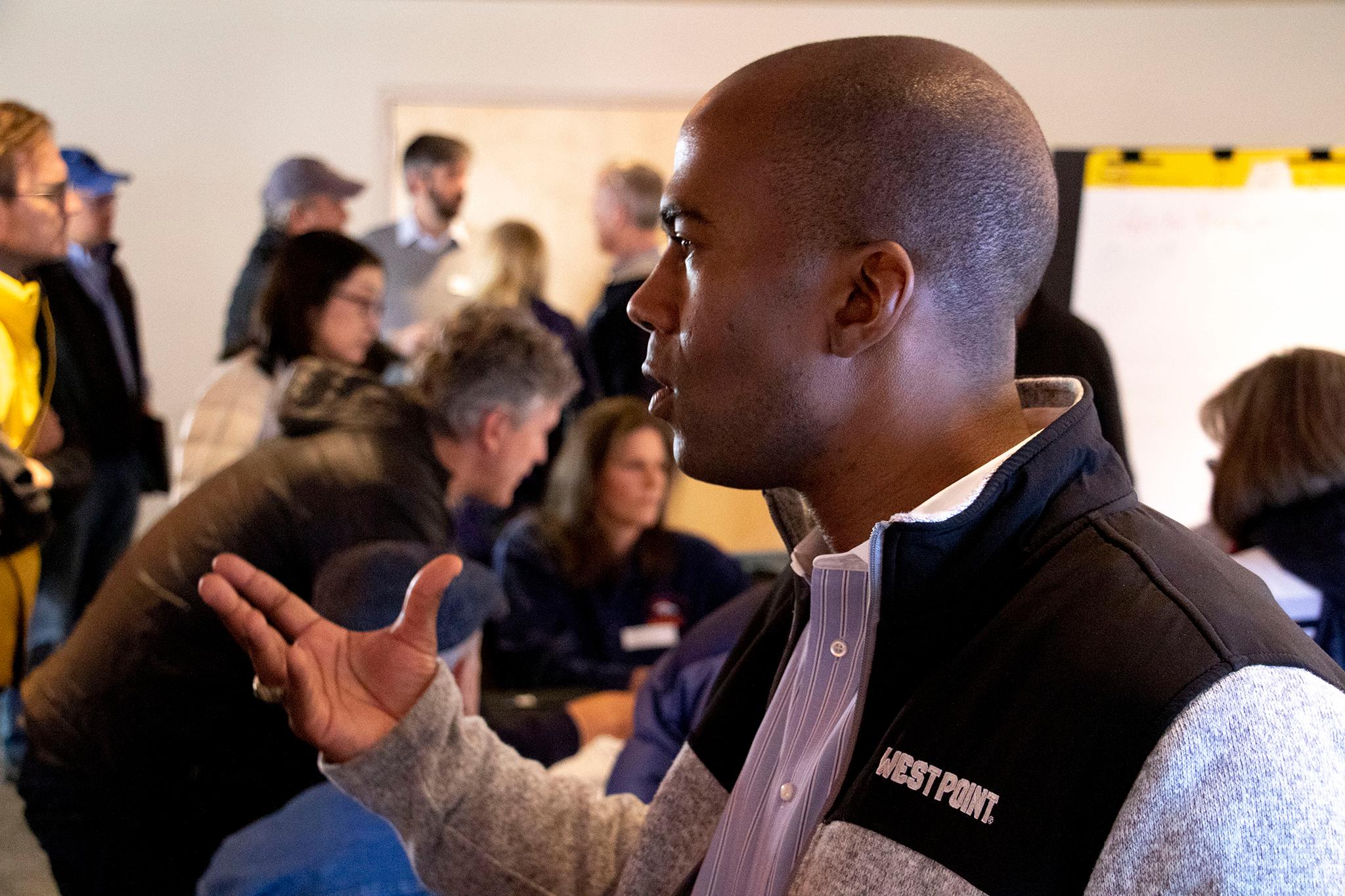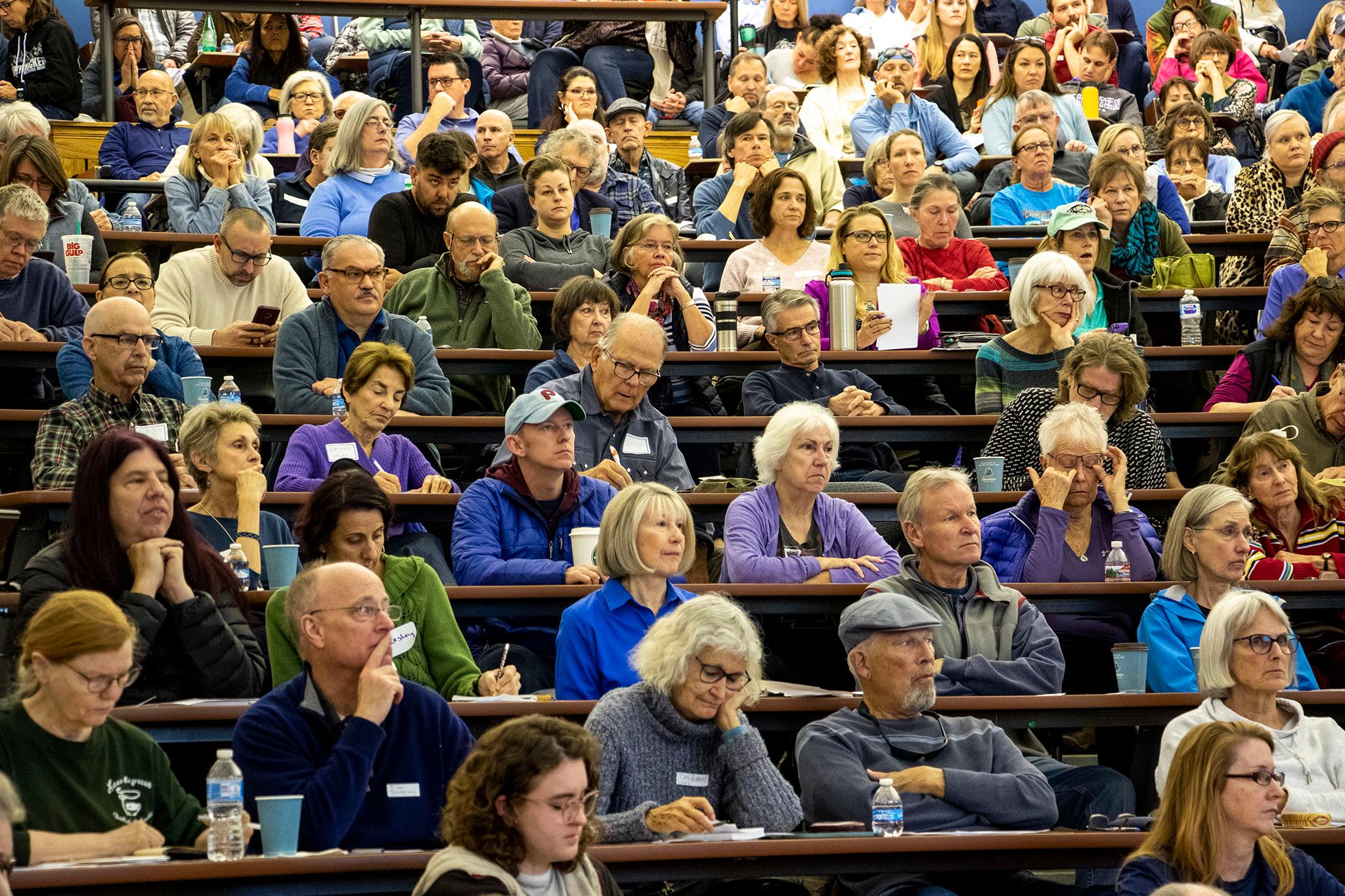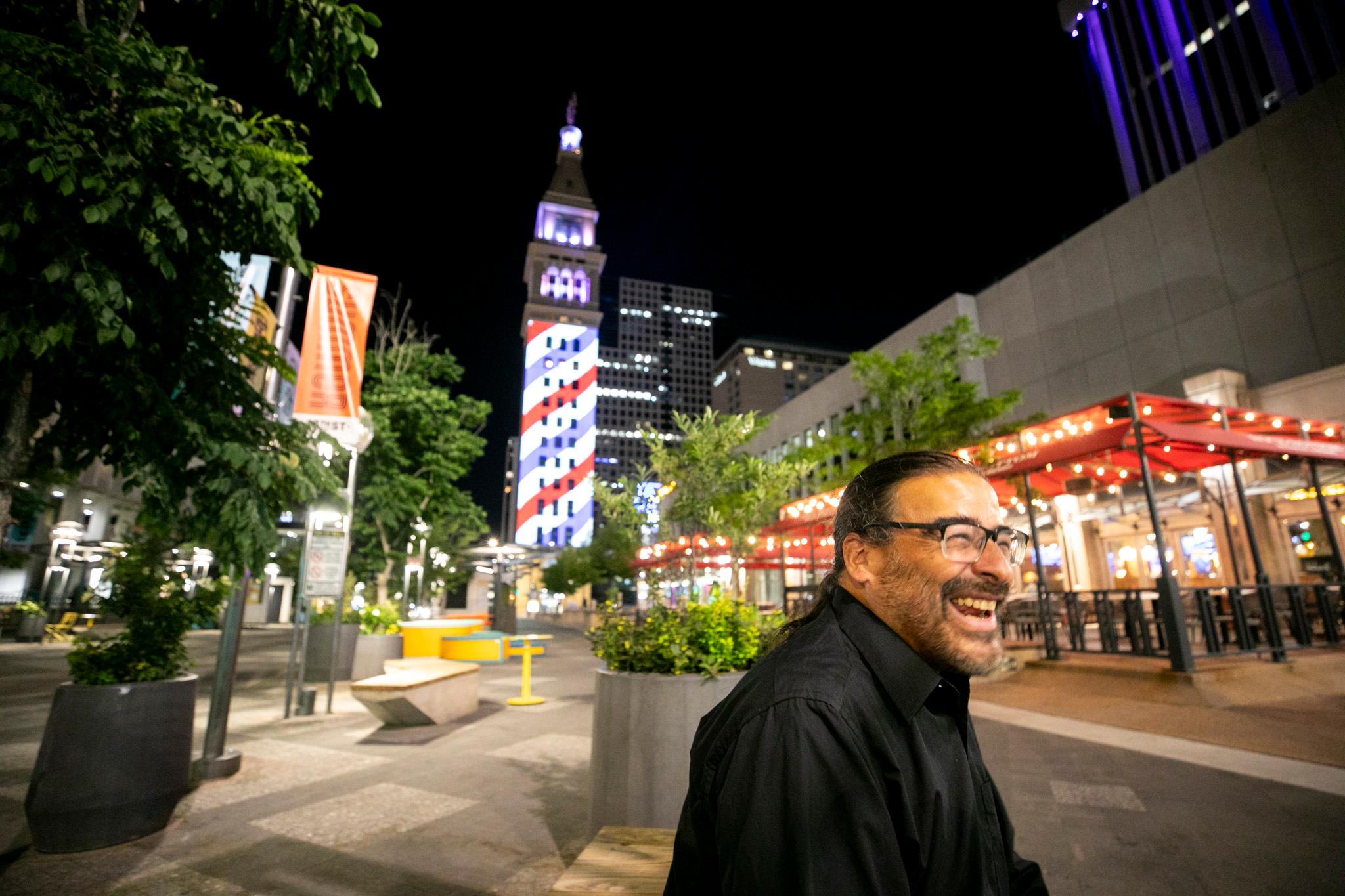More than 450 people spent their Saturday morning talking politely and rudely about their hopes and fears surrounding the East Area Plan, a blueprint for how four east Denver neighborhoods will change over the next 20 years.
There was the guy who interrupted the new Denver planning director (and expert city planner) Laura Aldrete mid-sentence during her presentation to yell, "Experts! We're here to hear experts!" But there were also hundreds on hand to shush him.
Such is the tenor of the debate, which centers on how high buildings should rise in East Colfax, Hale, Montclair, and South Park Hill, and where duplexes and triplexes should be allowed -- if anywhere -- in neighborhoods where single-family homes rule.
"Planning has never been about the loudest voice," Aldrete said. "Planning is about making sure we hear everyone and that means we have to create different forums to have those conversations."

Surveys show the evolving plan's 33 recommendations -- supporting small businesses, rehabbing the sidewalk network, making streets safer -- enjoy significantly more agreement than discord, reps from Denver Community Planning and Development said.
Building heights and housing diversity, not so much.
An affordable housing shortage and development fatigue shape a debate with hard lines, blurred lines, and lines that criss-cross.
About 4,700 households across the neighborhoods are "cost-burdened," meaning they spend more than 30 percent of their income on their rent or mortgage, according to stats from the planning department. And the area is short 1,400 affordable homes -- rents of $500 or less -- for people who already live there as housing costs have outstripped wages.
Denver cannot legally require developers to build affordable homes. It's against the law to do that anywhere in Colorado. But the government can incentivize the market by allowing taller buildings and duplexes and triplexes where they weren't previously allowed in exchange for affordable units.
"We are suggesting that these rules be triggered with incentives," said Cheney Bostic, an urban planning consultant with Studioseed. "Incentives allow us to require certain things that we cannot otherwise require. In other words, we are using carrots -- you can choose to do more on your property -- and sticks -- but if you do, you have to give more back to the community."
Preserving old architecture and providing public open space are two other examples of benefits planners hope to squeeze out of developers. But the prospect of more places and more people is scary to some -- for very different reasons.
"I could be wrong, but a lot of what I hear from South Park Hill is height worries and property values going down, and I think people in East Colfax are concerned with affordability and ensuring that there's still affordability with development," said Ellen Parman, who lives in East Colfax with her young family.

Parman wants to see more affordability and housing diversity but is wary of the private sector delivering it. She would like to see statewide policies change to legalize mandating inexpensive housing.
Towanna Henderson doesn't trust the market to prevent displacement either. The East Colfax local said hers is one of the few African American families left on her block since Stapleton sprang up nearby. She loves the newly available shops and restaurants but knows those amenities have raised rents, housing values and property taxes.
"At the same time (the city is) saying they want to make sure there's no displacement, they're also telling us that you cannot guarantee that development's not gonna displace people," Henderson told Denverite.

She wants to see guaranteed protections for people that live there now, she told Denverite. She also wants the process to represent minorities and lower income residents better, she said in an email.
"East Colfax and Hale are already leading the way with allowing density in our neighborhoods with 8.2 units per acre and 8.8 units per acre respectively," Henderson said in an email. "We welcome this density if it will address the (affordability) issues that will lead to stable housing and address the potential of displacement in our communities."
Development fatigue plays out in different ways. Just ask Anne Callison, an east Denver resident who would not give her neighborhood at the neighborhood meeting.
"The fort is full," Callison told Denverite. "Bad development equals bad traffic equals bad air.
"Nobody deserves the right to live in Denver or anywhere else. You just don't. Your right comes by how hard you work. The harder you work, the more money you make, and you know these kids who say they can't afford it? Well they're in bars every night buying 10-dollar beers. That's not my problem."

Craig Ricketts, who grew up in Montclair, takes a more moderate stance. He still has concerns about affordability and historic preservation but says Denver needs to accommodate growth.
"I think we do need to be increasing some density over time just because of a growing city," Ricketts said.
City officials admit they cannot make everyone happy.
The East Area Plan public process started in July 2017 and has featured 37 public meetings, including steering committee gatherings comprised of locals from each neighborhood. But those opportunities don't always translate to feelings of inclusivity.
"Unfortunately, probably the best-case scenario here is that we come up with a plan that makes no one entirely happy and that will be the win, unfortunately," said City Councilwoman Amanda Sawyer, whose district falls in the plan area. "But I'm not going to lie to you. That is probably going to be the way this turns out, but we are better off with a plan."
She's been the top voice of opposition to some of the plan's values, Sawyer told Saturday's crowd. Voters elected her on a platform of reining in development and for the import she places on single-family neighborhoods.
A long time ago, government regulators and real estate lobbyists used single-family zoning as a tool to keep people of color and lower income Denverites out of certain neighborhoods. Many see allowing more homes in traditionally single-family areas as an antidote.
Sawyer has caught flak for her views, which she says are about maintaining neighborhood character.
"I hate when people call me a racist," Sawyer said. "Just because I value single-family zoning doesn't make me a racist."


In a plea for civility, she said her opinion is not any more important than anyone else's.
Councilman Chris Herndon's district falls in east Denver as well. He knows not everyone will agree, but trusts the process.
"There might be someone that says, 'X is important to me,' but if those ideals aren't aligned with our 2040 plan, we're just going to say, 'Listen, we already have our larger plan, so our small area plan has to have those values of equitable, inclusive, et cetera.'"
A lot of people might not realize that two citywide plans already etched in stone color east Denver's.
Blueprint Denver and the 2040 Comprehensive Plan, two documents approved after a years-long public process, guide the push for more types of housing (duplexes, triplexes, four-plexes, guesthouses also known as accessory dwelling units) in traditionally single-family neighborhoods and taller buildings near transit.
Those documents have already established the city government's values -- and ostensibly the values of city dwellers, though that's up for debate. The East Area Plan just gets more granular. For example, whether five, eight or 12 stories will be allowed near bus stops on Colfax and Colorado avenues.
"The plan offers guidance, not rules," city planner Elizabeth Weigle said.
Regulations come after another delightful public process.











